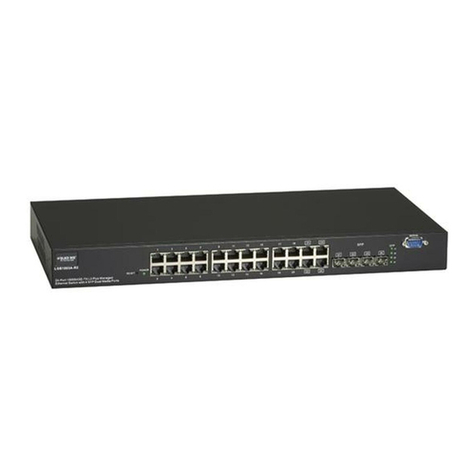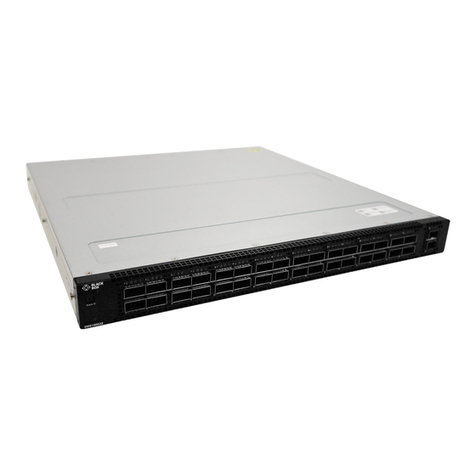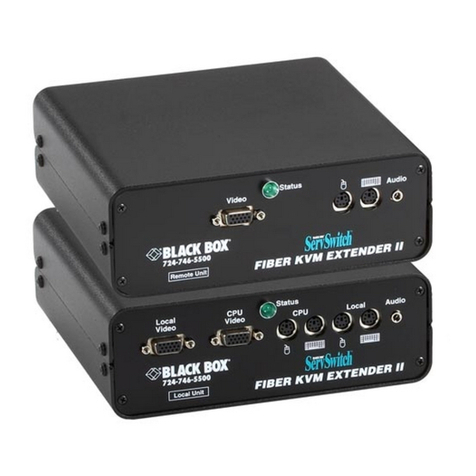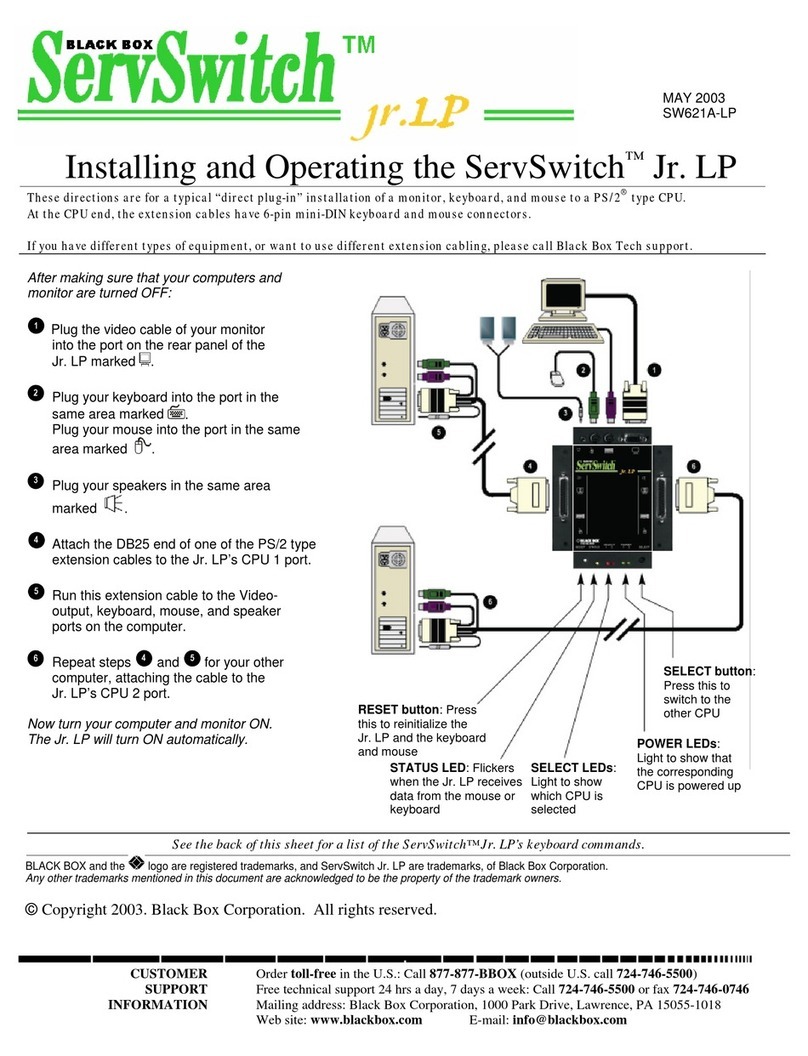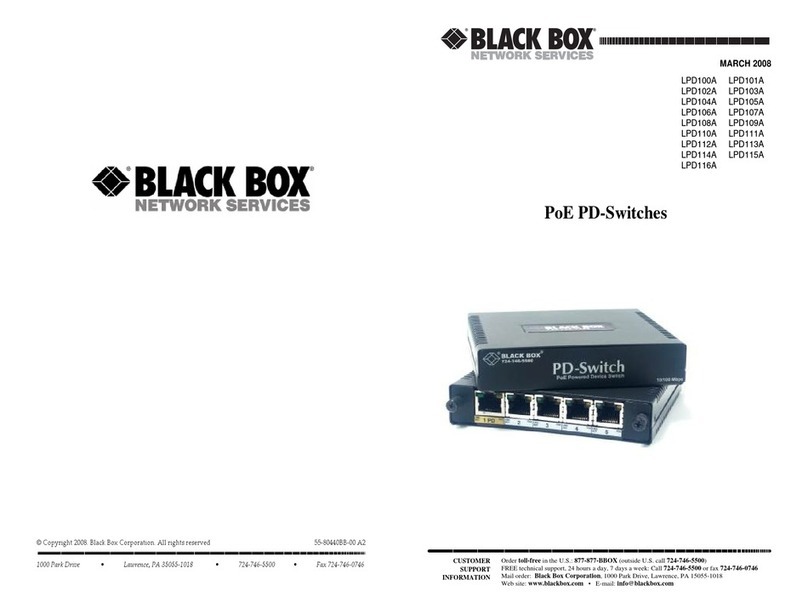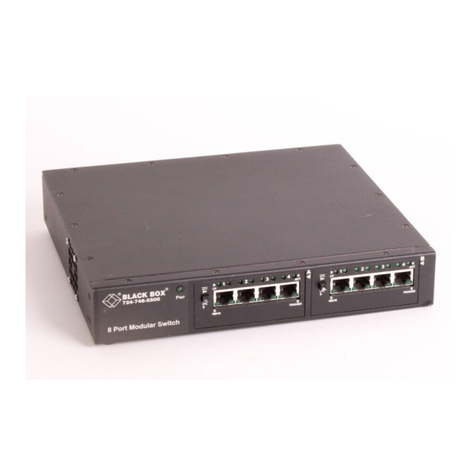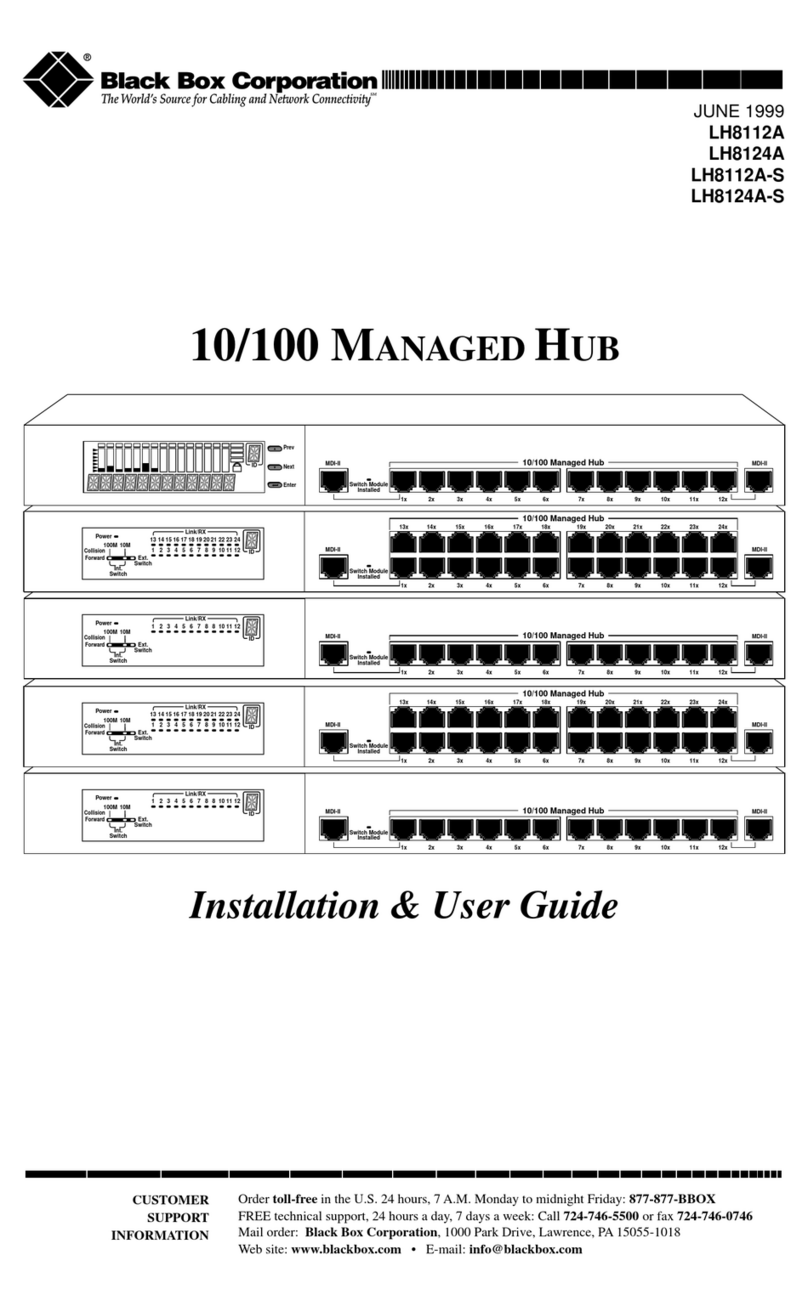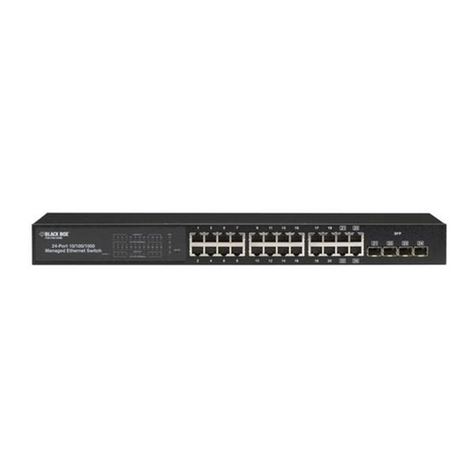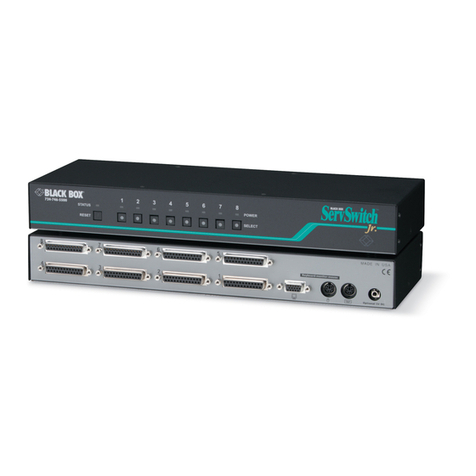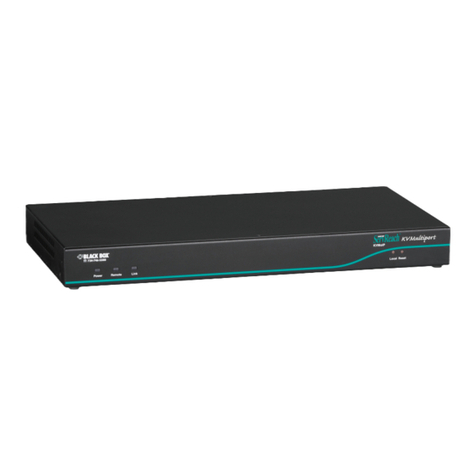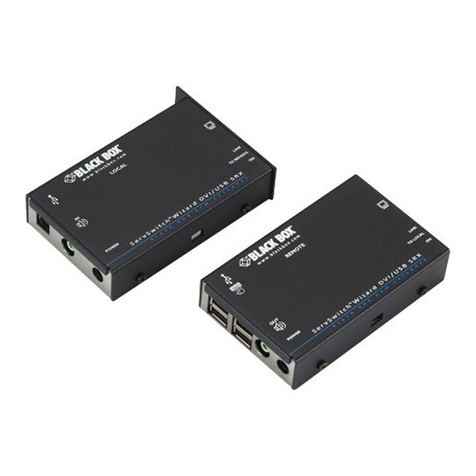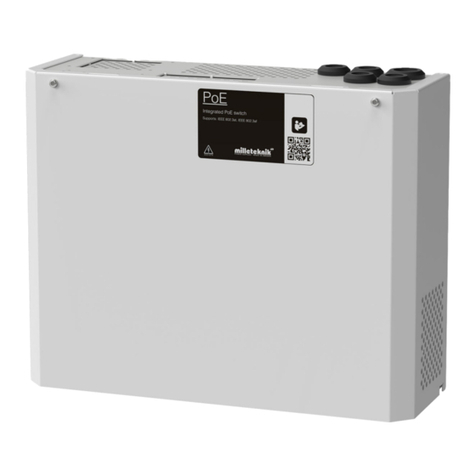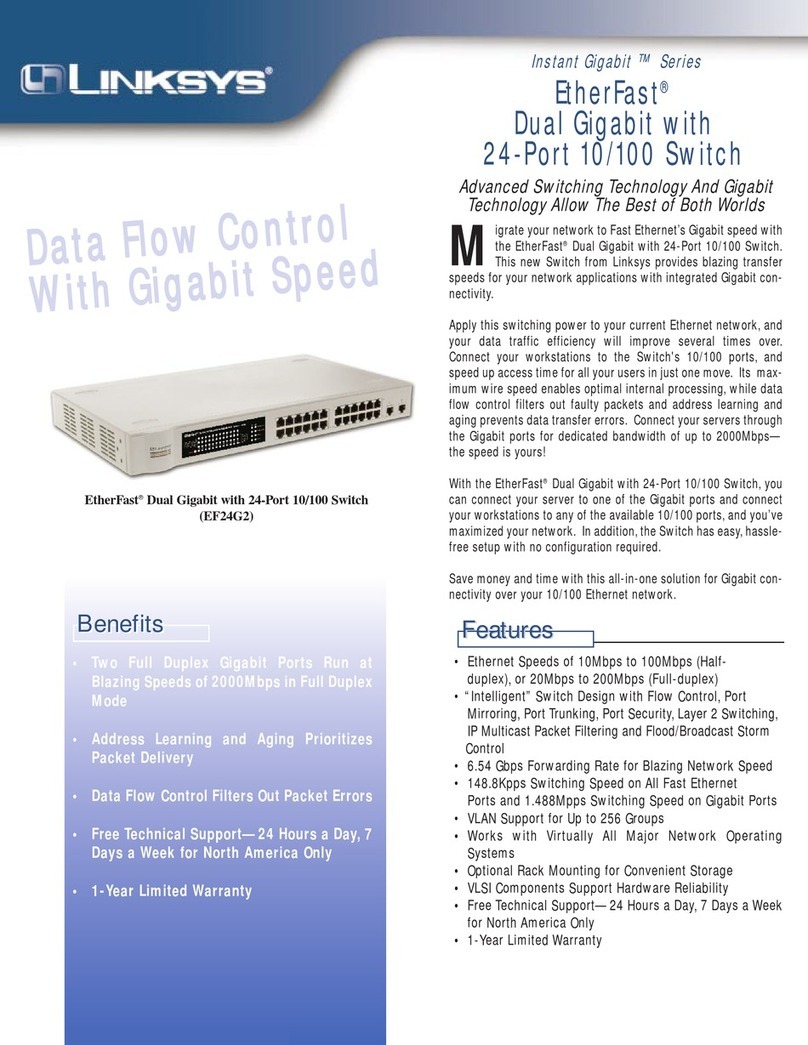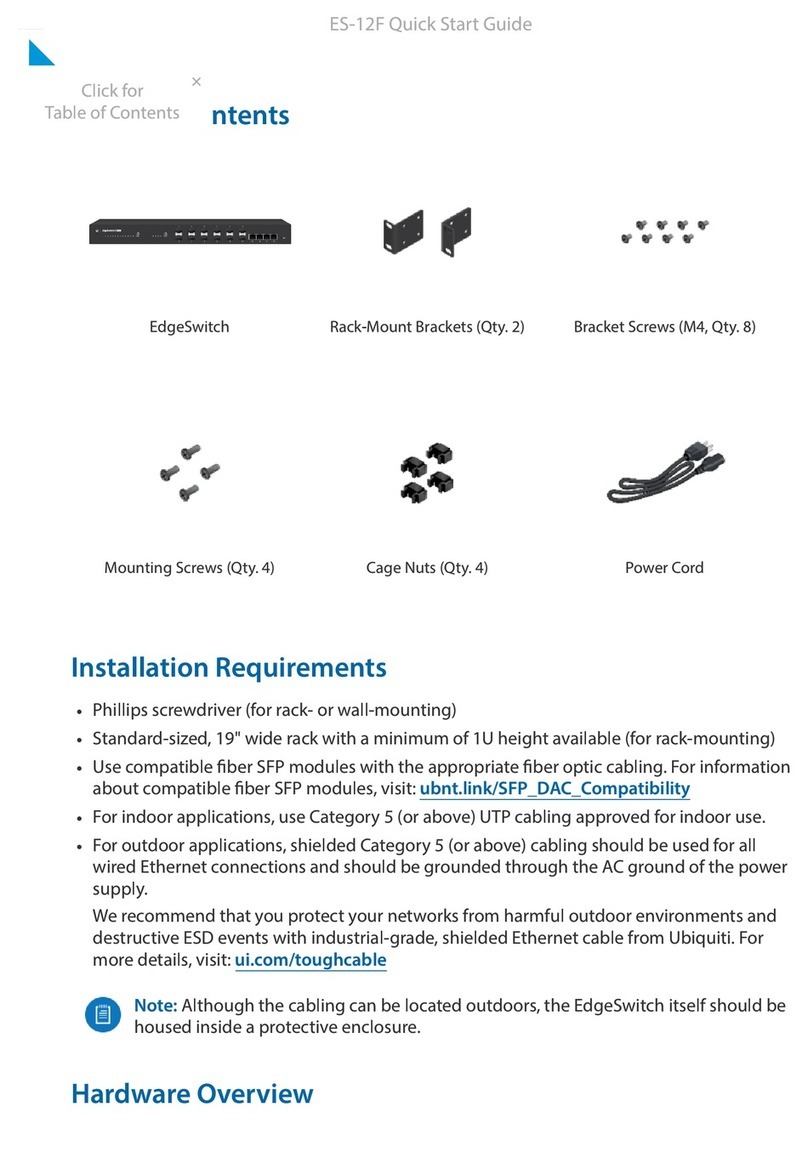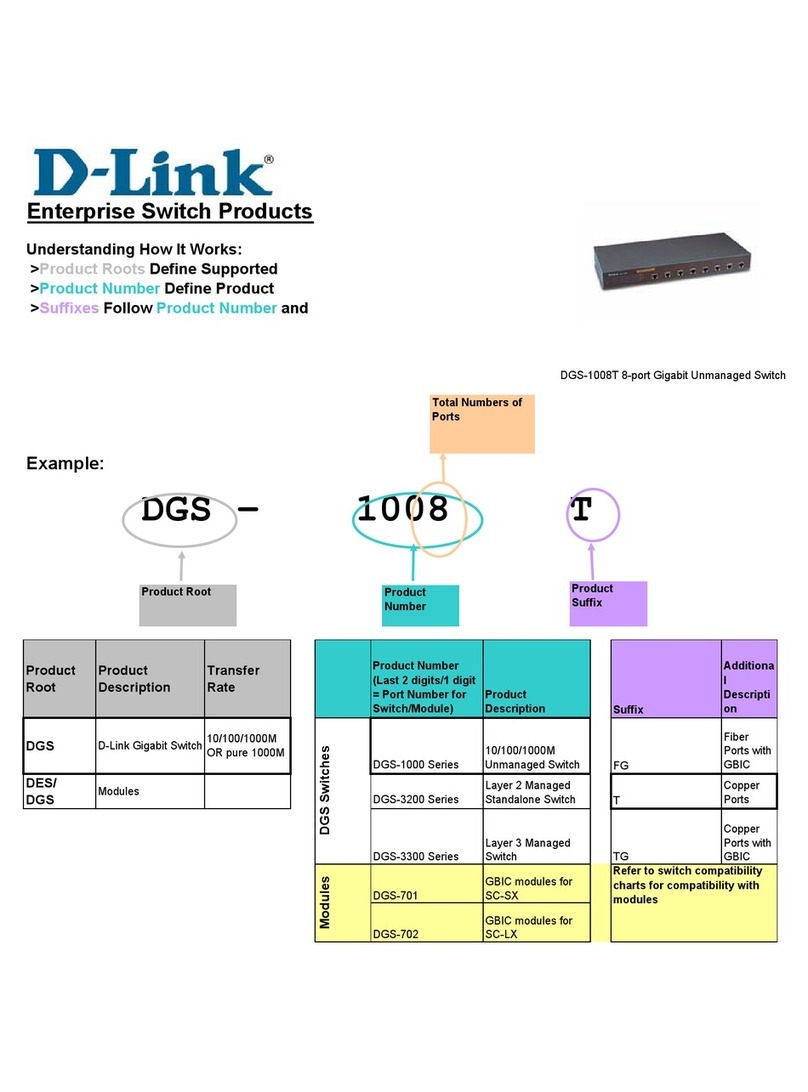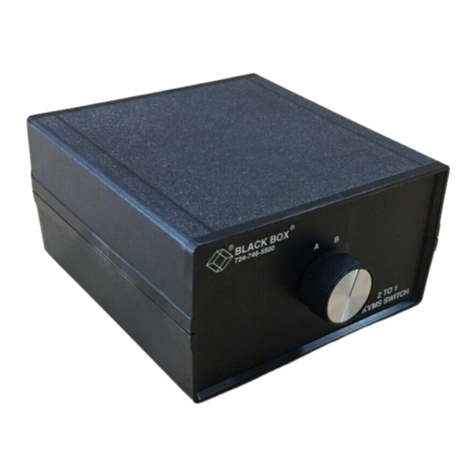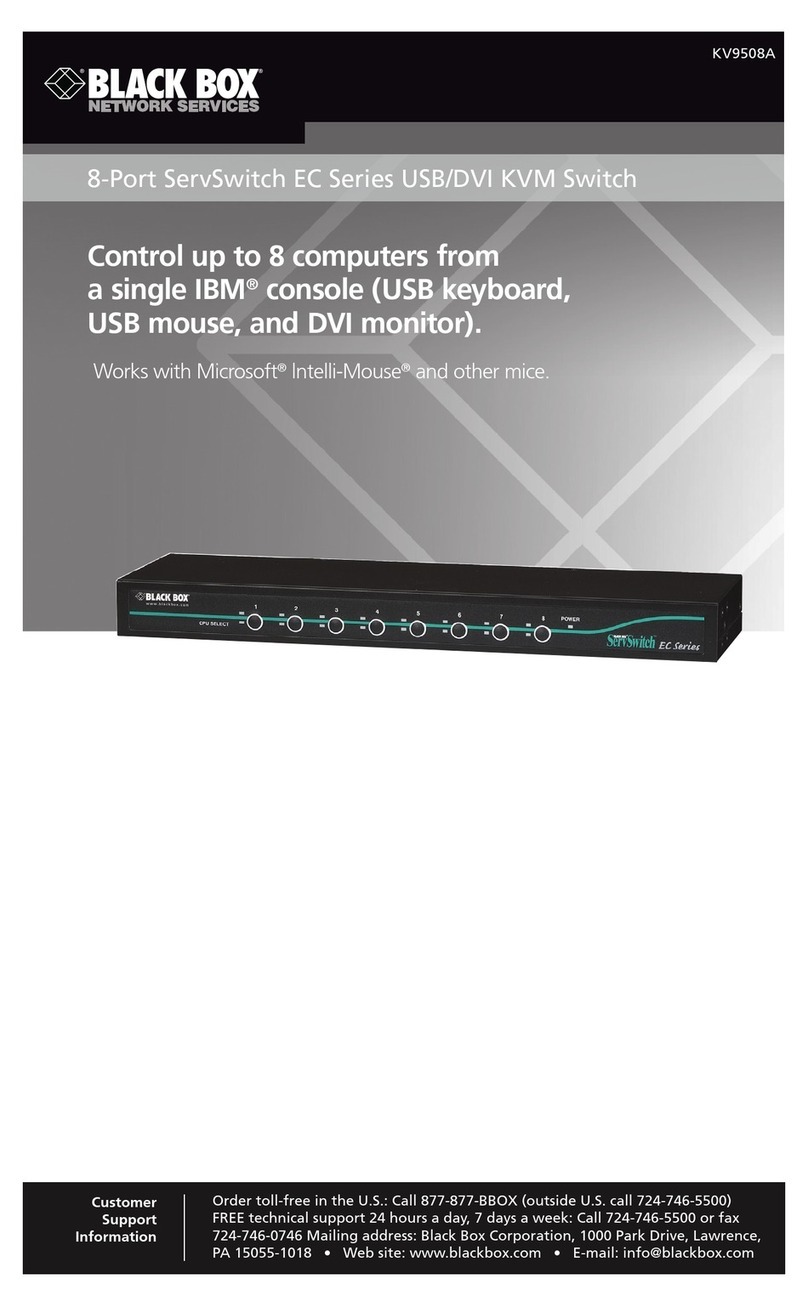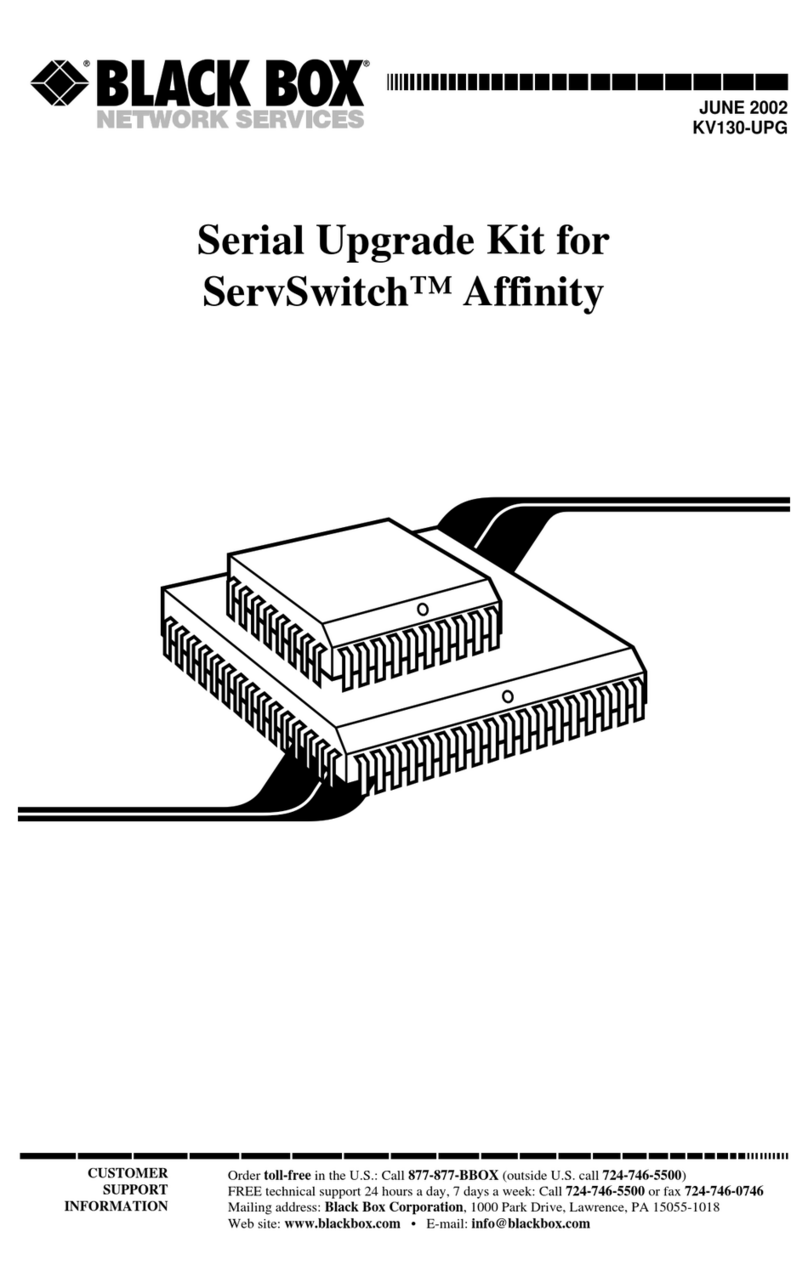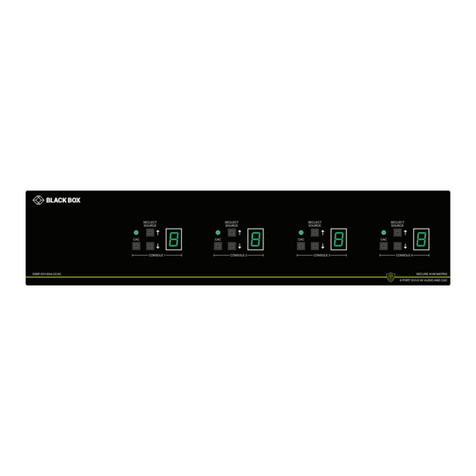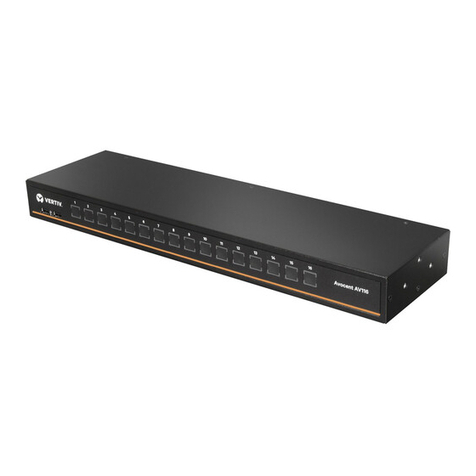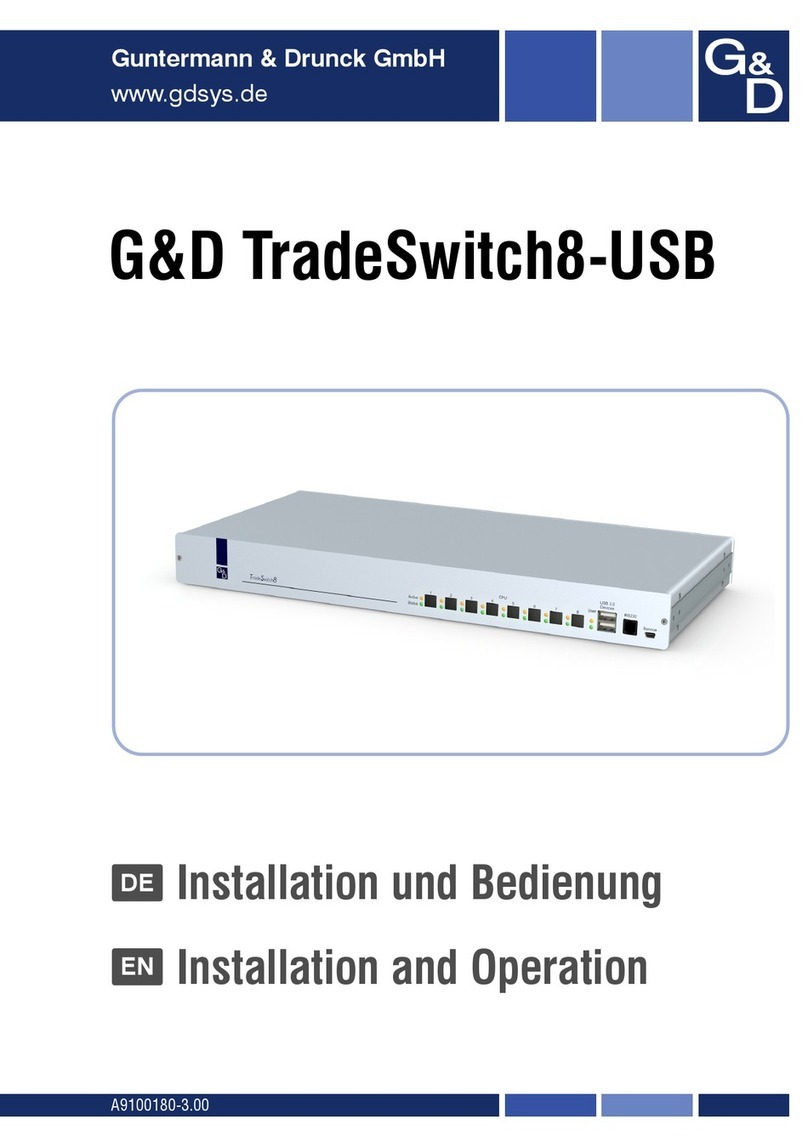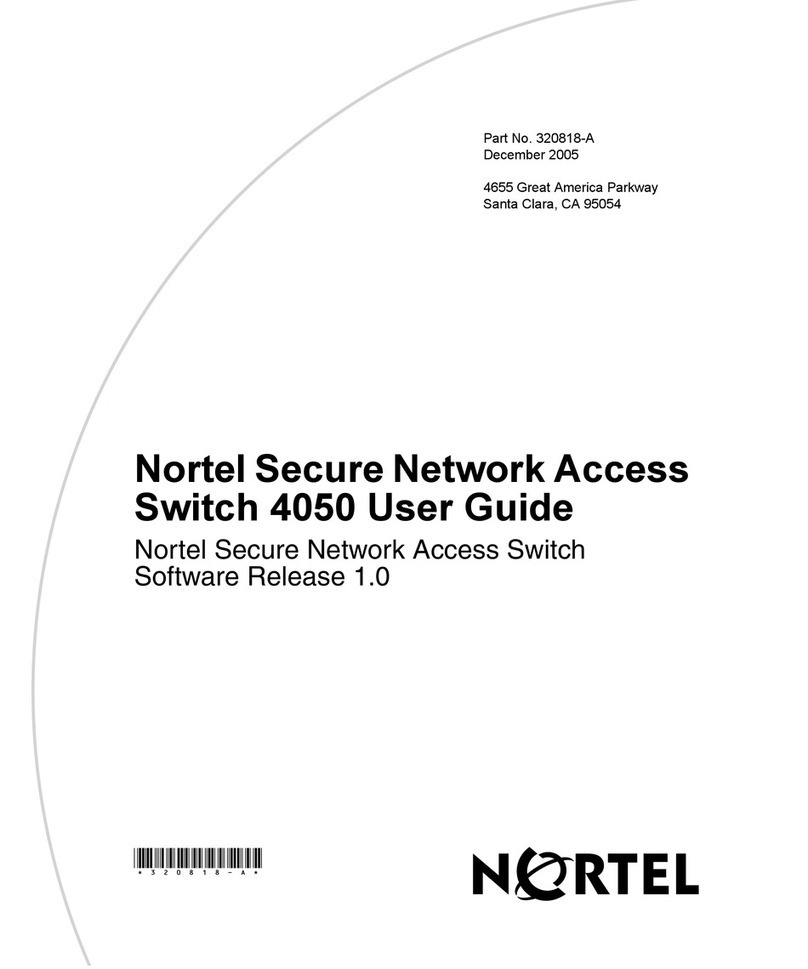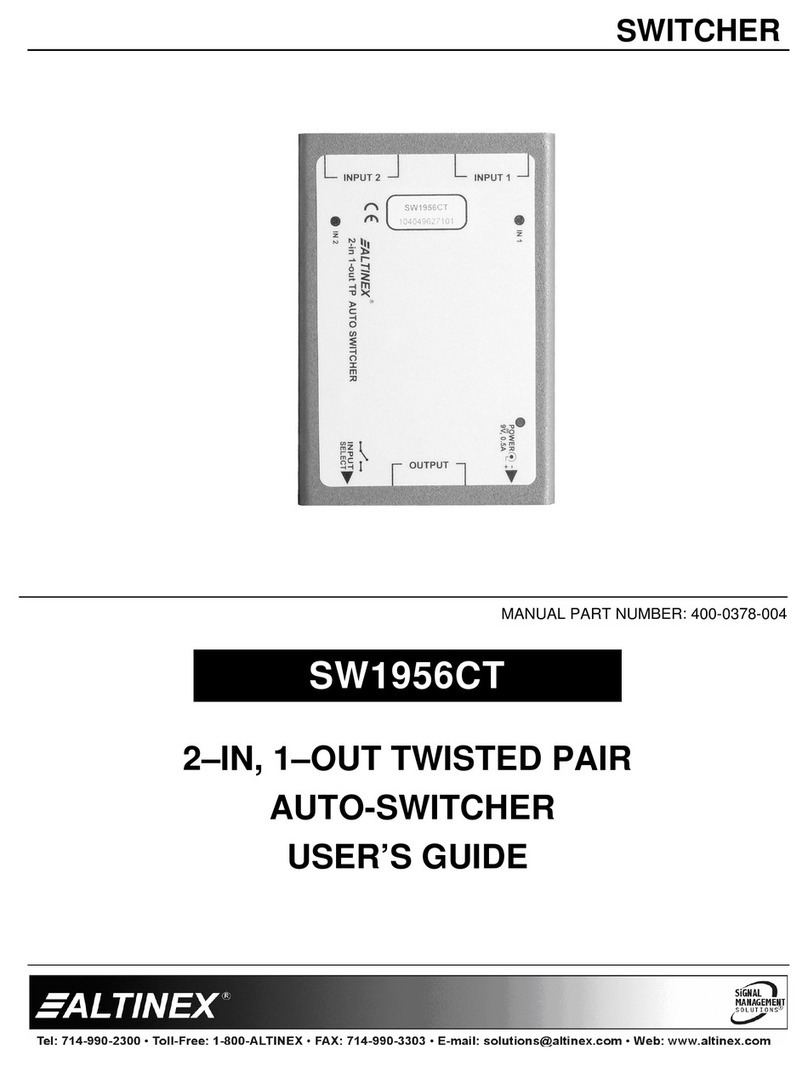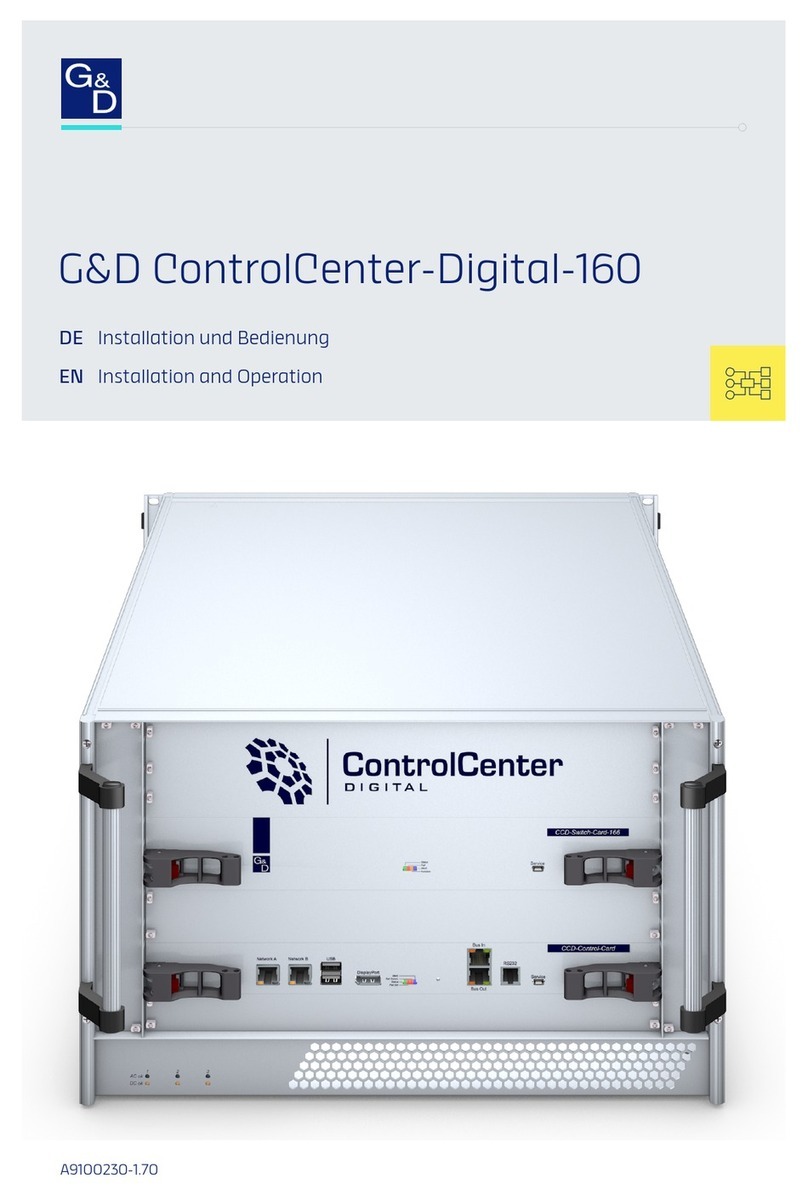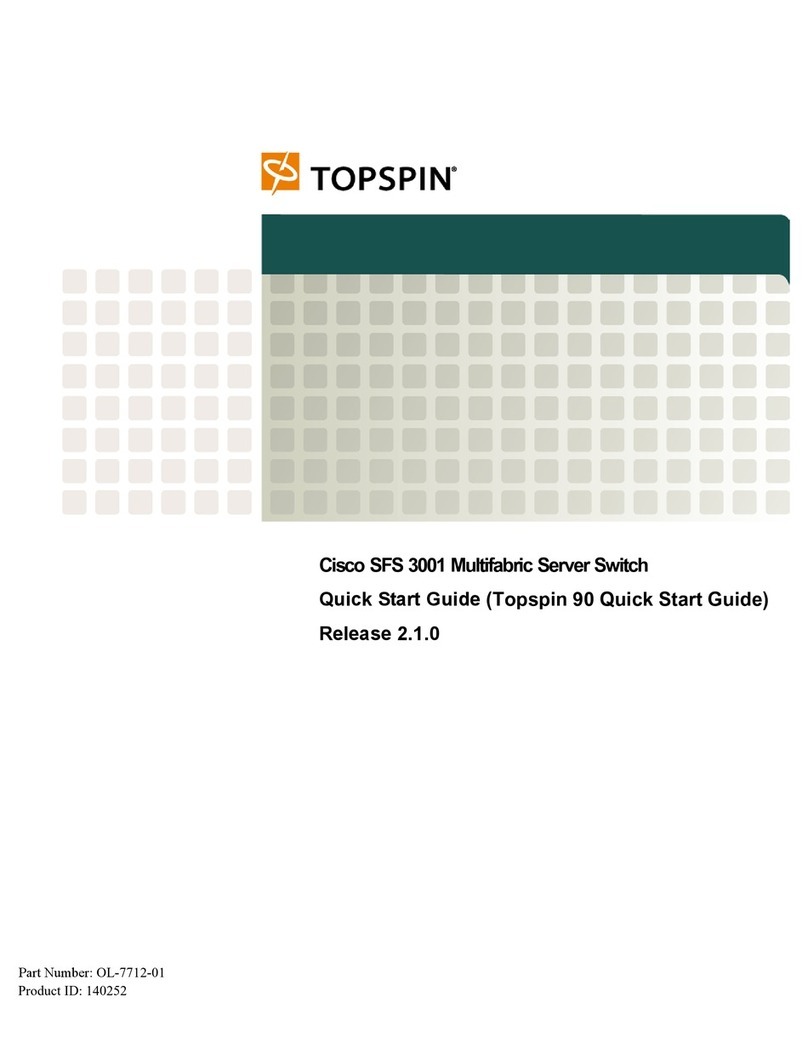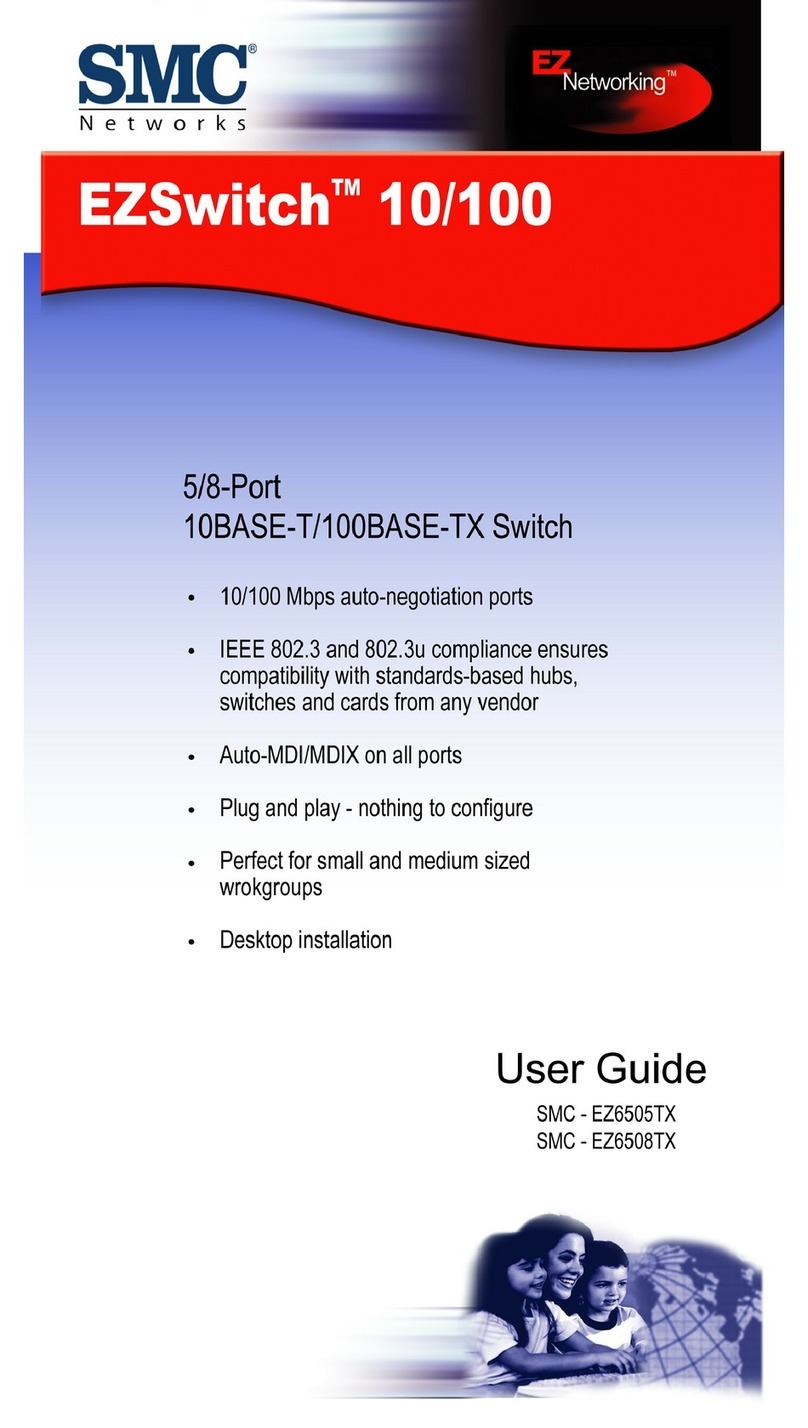
Introduction
The Latching Fi er Optic A/B Switch is a full-duplex optical switch. It can e used to connect a network or shared
device to one of two networks or remote devices. A front panel rotary style kno allows the user to select which of
the two ports (A or B) is connected to the COMMON Port on the switch. The switch operates using a unique all-
optical micro-mirror, eliminating the complexity and vulnera ilities of electronic fi er switches. When you turn the
rotary kno on the front of the switch to select (A or B) connected to COMMON, the internal micro-mirror rotates to
redirect the optical eam from one port to the other. This technique eliminates the need to convert optical signals to
electronic signals for switching and is therefore transparent to data rates and protocols. No power is required to pass
optical data through the switch and there is no setup required. The latching optical switch maintains the selected
optical connection even when power is lost or removed.
Installation
Place the switch in a location relatively free from vi ration and mechanical distur ances, near a source of AC
power. Before connecting the switch to your fi er optic devices, apply power to the switch and cycle the front panel
rotary kno , switching etween different connection states, to insure that the latching fi er optic switch modules are
in a known position.
Connect the shared network or device to the COMMON Port. Connect one remote device or network to Port A and
the other to Port B. Note that the switch supports separate transmit and receive paths, so you must e consistent
when connecting the fi er pairs to the switch so that the transmit output from the device connected to the
COMMON Port routes to the receive input on the devices connected to Port A and Port B, and vice versa.
Your installation of this switch is now complete.
Operation
Operation is easy. Simply turn the kno on the switch front panel to route the signals. Turning the kno to “A” will
route signals etween the COMMON Port and Port A. Selecting “B” routes the signals etween the COMMON Port
and Port B.
The switch uses an internal mirror to switch etween ports. The mirror directs a light eam from the COMMON
Port to Port A, or the COMMON Port to Port B. There’s no optical-to-electrical conversion etween the fi er optic
connections. Although power is required to change the selected connection, the latching optical switches continue
to pass optical data if power is lost or removed.
Troubleshooting
If the Fi er Optic A/B Switch fails to operate, check the following efore calling for technical support.
1. Ensure that the power supply connected to a power source and to the switch.
2. Check the fi er optic connectors for proper connections to the correct ports of the switch.
3. Operate the switch kno to verify that it’s tightly secured to the switch shaft and does not spin loosely.
4. Verify the integrity of the fi er optic leads y replacing a suspect lead with a spare.
Notes:



